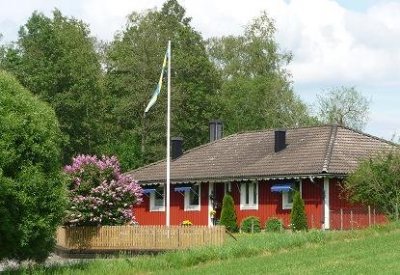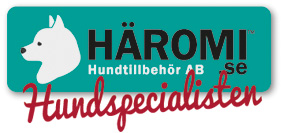A Breed Standard is the guideline which describes the ideal characteristics, temperament and appearance including the correct colour of a breed and ensures that the breed is fit for function. Absolute soundness is essential. Breeders and judges should at all times be careful to avoid obvious conditions or exaggerations which would be detrimental in any way to the health, welfare or soundness of this breed. From time to time certain conditions or exaggerations may be considered to have the potential to affect dogs in some breeds adversely, and judges and breeders are requested to refer to the Breed Watch section of the Kennel Club website here http://www.thekennelclub.org.uk/services/public/breed/watch for details of any such current issues. If a feature or quality is desirable it should only be present in the right measure. However if a dog possesses a feature, characteristic or colour described as undesirable or highly undesirable it is strongly recommended that it should not be rewarded in the show ring.
General Appearance
Distinctive head with beautiful silky covering, with large, wise, intelligent eyes offsetting long, low, weaselly body. Short, strong legs; weatherproof coat.
Characteristics
Game, workmanlike terrier.
Temperament
Independent, highly intelligent, determined, persistent, sensitive, affectionate and dignified.
Head and Skull
Head strongly made, large but in proportion to dog's size, muscles showing extraordinary development, especially the maxillary. Skull broad, narrowing towards eye, measuring about the same from inner corner of eye to back of skull, as from ear to ear. Forehead well domed; head covered with very soft, silky hair not confined to mere ‘topknot’. Cheeks gradually tapering towards deep and strongly made muzzle. Muzzle in proportion to skull as three is to five. Top of muzzle has triangular bare patch pointing backwards to eyes from nose about an inch broad. Nose black
Eyes
Rich dark hazel; set wide apart and low, large for a small dog, bright, full and round but not protruding.
Ears
Pendulous, set well back, wide apart, low on skull, hanging close to cheeks with very slight projection at base; broad at junction of head and tapering almost to a point, fore part of ear coming almost straight down from its junction with head to tip. Cartilage and skin of ear very thin. Length of ear, from 7.5-10 cms (3-4 ins). Ears harmonise in colour with body colour. In a pepper dog, covered with soft, straight, dark hair (in some cases almost black). In a mustard dog, hair mustard in colour, a shade darker than body but not black. Both should have a thin feather of light hair starting about 5 cms (2 ins) from the tip, and of nearly the same colour and texture as ‘topknot’, giving ear appearance of a distinct point. This may not appear until after the age of two years.
Mouth
Jaws strong with a perfect, regular and complete scissor bite, i.e. upper teeth closely overlapping lower teeth and set square to the jaws. Any deviation highly undesirable. Teeth very strong especially canines which are extraordinary in size for a small dog. Canines fit well against each other, to give greatest available holding and punishing power. Inside of mouth black or dark coloured.
Neck
Very muscular, well developed and strong, showing great power. Well set into shoulders.
Forequarters
Shoulders well laid back but not heavy. Forelegs short with immense muscular development and bone, set wide apart and chest coming well down between them. Forearms to follow line of chest with feet pointing forward or slightly outward when standing. Bandy legs highly undesirable.
Body
Long, strong and flexible; ribs well sprung and round, chest well developed and well let down between forelegs; back rather low at shoulders having slight downward curve and corresponding arch over loins, slight gradual drop from top of loin to root of tail. Backbone well muscled.
Hindquarters
Hindlegs a little longer than forelegs; set rather wide apart, but not spread out in an unnatural manner; thighs well developed. Stifles angulated, hocks well let down. Dewclaws, if present, customarily removed.
Feet
Round and well padded. Hindfeet smaller than forefeet. Nails dark but varying in shade according to colour of body. Flat or open feet highly undesirable.
Tail
Rather short from 20-25 cms (8-10 ins), rather thick at root, getting thicker for about 10 cms (4 ins) and tapering off to a point. Not twisted or curled in any way but with a curve like a scimitar, the tip when excited being in a perpendicular line with root of tail, set neither too high nor too low. When not excited carried gaily a little above body level.
Gait/Movement
Strong, straight impulsion from rear, giving a fluent free and easy stride, reaching forward at the front. A stiff, stilted, hopping or weaving gait highly undesirable.
Coat
Very important feature of the breed. Hair should be about 5cms (2ins) long. Double coat with a soft linty undercoat and a harder topcoat, not wiry but giving crisp feel to the hand. The coat should not ‘shed’ down the back, but should lie in pencils caused by the harder hair coming through the softer undercoat. The forelegs have feather about 5 cms (2 ins) long. Upper side of tail covered with wiry hair, underside not so wiry with neat feathering of softer hair.
Colour
Pepper or mustard.
Pepper: Ranges from dark bluish black to light silvery grey, intermediate shades preferred. Body colour coming well down shoulder and hips gradually merging into colour of legs and feet which varies according to body colour from rich tan to pale fawn. Profuse silvery white ‘topknot’.
Mustard: Varies from reddish brown to pale fawn. Profuse creamy white ‘topknot’, legs and feet of darker shade than head.
In both colours feather on forelegs rather lighter than hair on fore part of leg. Some white hair on chest and white nails permissible. White feet undesirable. Hair on underside of tail lighter than on upperside which should be darker colour than body.
Size
The height at withers should be from 20-28cms (8-11ins), length from withers to root of tail should not be more than twice the height, but preferably 1inch to 2ins less. Weight: 8-11 kgs (18-24 lbs) for dogs in good working condition. The lower weights preferred.
Faults
Any departure from the foregoing points should be considered a fault and the seriousness with which the fault should be regarded should be in exact proportion to its degree and its effect upon the health and welfare of the dog and on the dog’s ability to perform its traditional work.
Note
Male animals should have two apparently normal testicles fully descended into the scrotum.
Description
The breed was developed in the border Counties and Scotland and gained its present name after the publication of Sir Walter Scott's novel “Guy Mannering”. In the novel Scott modelled the character Dandie Dinmont on a neighbouring farmer who owned terriers which were called Pepper and Mustard.
Local readers of the novel recognised the farmer James Davidson and teased him with the nickname Dandie Dinmont and from that the terriers and all similar to them took their name. Furthermore, the colour of Davidson's terriers Mustard (sandy/brown) and Pepper (blue/grey) became the accepted descriptions of the recognised colours of the breed.
The unique features of the breed; the weasel like body and curving topline, its coat with silky topknot, and its large expressive eyes have made it increasingly popular in recent years, aided by its wonderful character.
In 2014 the breed was appointed with its own tartan, the black and yellow Dandie Dinmont tartan bestowed by the Duke of Buccleuch.
The Terrier Breed Group
Dogs originally bred and used for hunting vermin. 'Terrier' comes from the Latin word Terra, meaning earth. This hardy collection of dogs were selectively bred to be extremely brave and tough, and to pursue fox, badger, rat and otter (to name but a few) above and below ground. Dogs of terrier type have been known here since ancient times, and as early as the Middle Ages, these game breeds were portrayed by writers and painters.









